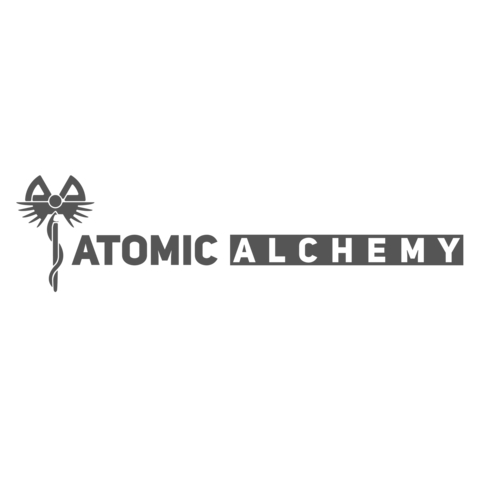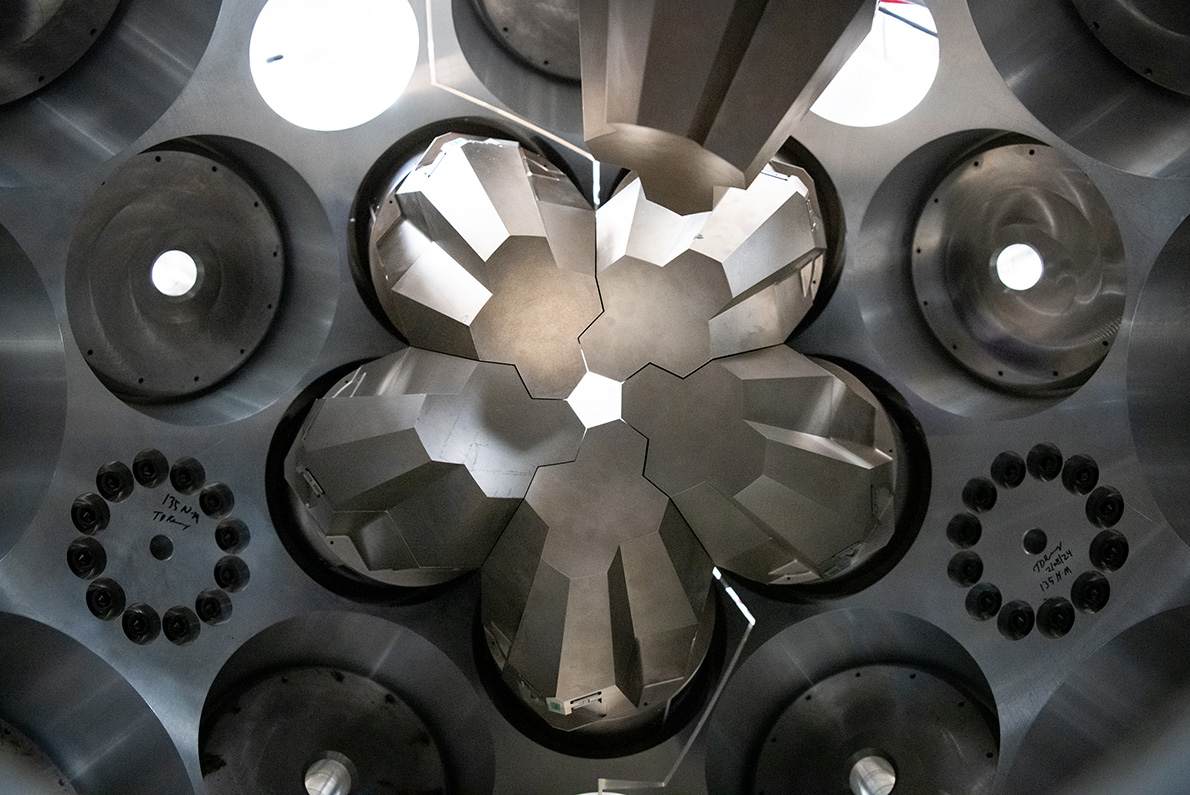Concept art of a fission surface power system on the surface of the moon. (Image: Lockheed Martin)
The “space race” is once again making headlines, with technology worthy of the 21st century. Like the Cold War–era competition, this race too is about showcasing power—but this time it's nuclear power.
A new article in Power Technology examines the competing efforts of the United States, Russia, and China as they strive to be the first to put a nuclear reactor on the moon to power a lunar base, detailing the technical challenges and international rivalries.
Orano USA CEO Jean-Luc Palayer (middle) shakes hands with Zeno Power’s cofounder and CEO Tyler Bernstein (left) and Chief Commercialization Officer Harsh Desai. (Photo: Orano USA)
Zeno Power, a developer of nuclear batteries, is to receive americium-241 recovered from Orano’s La Hague nuclear fuel recycling site in Normandy, France, under a strategic agreement announced by the companies on September 24.
A still image from a NASA video illustrating power needs on the lunar surface. (Image: NASA)
After the Trump administration’s new push to get a nuclear reactor on the moon by 2030 was first reported by Politico last month, media played up the shock value for people new to the concept. Few focused on the technical details of the new plan for lunar fission surface power (FSP), which halts and replaces a program that began under the first Trump administration with an early hope of getting a reactor on the moon by the end of 2026. Now, the focus is on streamlining NASA’s internal processes to support commercial space companies that can build a reactor with more than twice the power and mass and have it ready for launch by 2030.
Rendering of a floating nuclear power plant concept, in foreground. (Image: American Bureau of Shipping/Herbert)
On April 22, 1959, Rear Admiral George J. King, superintendent of the Maine Maritime Academy, announced that following the completion of the 1960 training cruise, cadets would begin the study of nuclear engineering. Courses at that time included radiation physics, reactor control and instrumentation, reactor theory and engineering, thermodynamics, shielding, core design, reactor maintenance, and nuclear aspects.
GRETA will use multiple germanium crystals to track gamma rays emitted from nuclear decays. Pictured here are 24 of the 120 crystals in 6 modules. (Credit: Robinson Kuntz/Berkeley Lab)
Researchers announced earlier this month that they have completed major construction of the Gamma-Ray Energy Tracking Array (GRETA), a precision tool for gamma ray spectroscopy that, according to Paul Fallon, a researcher at University of California–Berkeley and GRETA’s project director, will be 10 to 100 times more sensitive than previous nuclear science experiments. Fallon was quoted in an August 8 article published by Lawrence Berkeley National Laboratory (Berkeley Lab)—where GRETA’s project leaders are based and GRETA was assembled.
Artist’s depiction of the planned Radioisotope Science Center at Discovery Ridge in Columbia, Mo. (Image: BSA LifeStructures)
The Department of Energy’s Office of Science has committed $20 million to the University of Missouri that—with a matching $20 million from the state government—will support construction of a Radioisotope Science Center (RSC) at the university’s Discovery Ridge research park in Columbia, Mo., projected for completion in early 2029. The new facility will pair the DOE’s Office of Isotope R&D and Production (IRP)—formerly known as the DOE Isotope Program—with the decades of expertise developed at the University of Missouri Research Reactor (MURR).
Photo: Wikimedia Commons/Alexas_Fotos
For the uninitiated, Dubai chocolate is a candy bar filled with pistachio and tahini cream and crispy pastry recently popularized by social media influencers. While it’s easy to dismiss as a viral craze now past its peak, the nutty green confection has spiked global pistachio demand, and growers and processors are ramping up production. That means more pistachios need to be tested for aflatoxins—a byproduct of a common crop mold.
The Advanced Manufacturing Collaborative at the University of South Carolina–Aiken. (PHOTO: SRNL)
Energy Secretary Chris Wright will attend the opening of the Advanced Manufacturing Collaborative in Aiken, S.C., on August 7. Wright will deliver remarks and join Savannah River National Laboratory leadership and partners for a ribbon-cutting ceremony.
ORNL leadership gathered at the Nuclear Opportunities Workshop in Knoxville, with Trey Lauderdale, CEO of Atomic Canyon. From left: Joe Hoagland, Director of Special Initiatives; Susan Hubbard, Deputy for Science and Technology; Stephen Streiffer, ORNL Director; Lauderdale; Gina Tourassi, Associate Laboratory Director for Computing and Computational Sciences; and Mickey Wade, Associate Laboratory Director for Fusion and Fission Energy and Science. (Photo: Carlos Jones/ORNL)
The United States has tight new deadlines—18 months, max—for licensing commercial reactor designs. The Department of Energy is marshaling the nuclear expertise and high-performance computing assets of its national laboratories, in partnership with private tech companies, to develop generative AI tools and large-scale simulations that could help get nuclear reactor designs through the Nuclear Regulatory Commission’s licensing process—or the DOE’s own reactor pilot program. “Accelerate” and “streamline” are the verbs of choice in recent announcements from Oak Ridge National Laboratory and Idaho National Laboratory, as they describe plans with Atomic Canyon, Microsoft, and Amazon.

-3 2x1.jpg)





 The Department of Energy announced on Wednesday that it has awarded $134 million in funding for two programs designed to secure U.S. leadership in emerging fusion technologies and innovation. The funding was awarded through the DOE’s Fusion Energy Sciences (FES) program in the Office of Science and will support the next round of Fusion Innovation Research Engine (FIRE) collaboratives and the Innovation Network for Fusion Energy (INFUSE) awards.
The Department of Energy announced on Wednesday that it has awarded $134 million in funding for two programs designed to secure U.S. leadership in emerging fusion technologies and innovation. The funding was awarded through the DOE’s Fusion Energy Sciences (FES) program in the Office of Science and will support the next round of Fusion Innovation Research Engine (FIRE) collaboratives and the Innovation Network for Fusion Energy (INFUSE) awards.






 A
A 